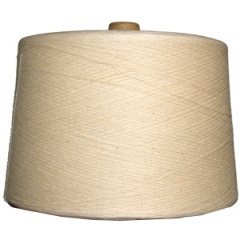Difference between revisions of "Yarn"
From Cargo Handbook - the world's largest cargo transport guidelines website
| Line 4: | Line 4: | ||
| stowage factor = <ul><li>1,70 - 9,10 m<sup>3</sup>/t (bales/cloth)</li><li>1,50 - 5,50 m<sup>3</sup>/t (boxes)</li></ul> | | stowage factor = <ul><li>1,70 - 9,10 m<sup>3</sup>/t (bales/cloth)</li><li>1,50 - 5,50 m<sup>3</sup>/t (boxes)</li></ul> | ||
| humidity and moisture = <ul><li>RH 65-70%</li><li>Moisture content 10-15%</li></ul> | | humidity and moisture = <ul><li>RH 65-70%</li><li>Moisture content 10-15%</li></ul> | ||
| − | | ventilation = | + | | ventilation = 6 air changes/hour (airing) if the dew point of the external air is lower than the dew point of the hold air |
| − | | risk factors = | + | | risk factors = Self heating, odor, contamination, mechanical influences, insect infestion |
}} | }} | ||
Revision as of 15:28, 18 July 2012
| Infobox on Yarn | |
|---|---|
| Example of Yarn |  |
| Facts | |
| Origin | - |
| Stowage factor (in m3/t) |
|
| Humidity / moisture |
|
| Ventilation | 6 air changes/hour (airing) if the dew point of the external air is lower than the dew point of the hold air |
| Risk factors | Self heating, odor, contamination, mechanical influences, insect infestion |











